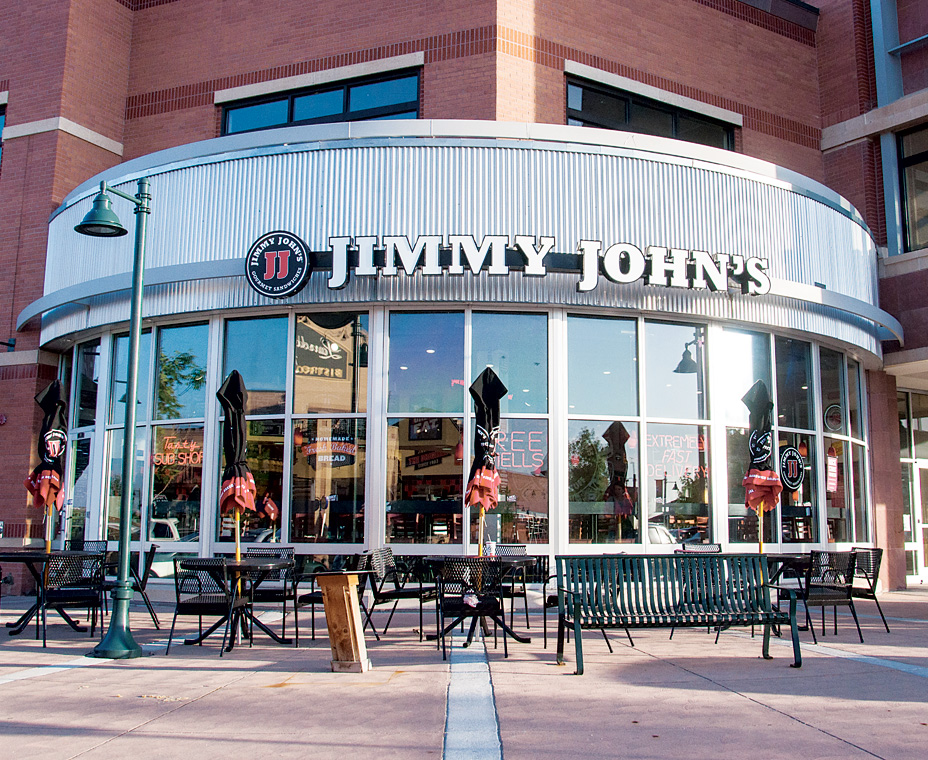Running a restaurant is tough stuff. The hours are exhausting. Assembling a menu can be exasperating. Picking the right location is no less a gamble than entering a Las Vegas casino. And the labor pool is about as predictable as a coin flip.
But that’s not detracting major equity firms from stocking their portfolios with restaurant brands. These days it seems increasingly common to see familiar restaurant brands bought and sold—often for hefty prices. Jimmy John’s, Baja Fresh, Cicis, and Wetzel’s Pretzels all announced they’re changing hands in the last few months.
Private-equity firm Roark Capital is buying a majority stake in Jimmy John’s for an undisclosed price. MTY Food Group agreed to buy BF Acquisition Holdings, the parent of Baja Fresh Mexican Grill and La Salsa Fresh Mexican Grill, for $27 million. Food and agriculture investment firm Arlon Group acquired pizza buffet chain Cicis for an undisclosed sum. And Wetzel’s Pretzels was acquired by the private equity group CenterOak Partners.
Here are 10 reasons why restaurant chain sales activity seems to be on the uptick, according to three quick-service industry consultants with experience in the mergers and acquisitions (m&a) world.
Money is cheap. There are few times in history when it’s been so cheap to borrow money, says Christopher Muller, professor of hospitality at Boston University. “The cost of money is so cheap, it’s almost free,” he says.
Money is out there. Many private equity firms are sitting on lots of cash that they need to deploy, says Gary Stibel, founder and CEO of New England Consulting Group. Investing in a well-managed, small-to-medium-sized restaurant chain “can be like buying into an annuity, because the risk is relatively low,” he says.
What’s more, says Chicago-based industry consultant Allan Hickok, these private equity firms are looking for growth platforms, which many small- and medium-sized limited-service chains represent.
Brands are maturing. As some well-run restaurant brands start to age, Stibel says, owners are considering whether it’s time to get out. Some of those who are selling restaurants right now, he says, “are eager to take some money off the table.”
Image has improved. For many years, the interest in investing in the restaurant industry was tempered by the industry’s reputation for having so many failures, Hickok says. In the past, when young bankers were trained on how to make good loans, one of the first things they were taught was this: Don’t loan to new restaurants because most of them won’t make it.
While that failure rate probably hasn’t changed much, the image has, he says. That’s in part because some large, successful chains have helped to stabilize the industry. At the same time, Hickok says, the industry itself has become more sophisticated through increasingly professional management.
A little can go a long way. The restaurant industry is a massive business, with more than $783 billion in annual sales and upward of 1 million locations nationally, estimates the National Restaurant Association. Specifically because of the industry’s overwhelming size, Hickok says, restaurants don’t need much market share to have a successful business. He points to how tiny Shake Shack’s market share is, but how big an imprint it’s already left on the industry.
Management has improved. The U.S. has a surprisingly strong cadre of skilled, professional restaurant managers, Muller says. “It’s much better than many people think it is,” he says. These days, Hickok adds, the industry’s top management is far better trained—and not just former operators.
Restaurants are a growth industry. Hospitality and healthcare are two industries that will continue to grow, Muller says. “People are not going to stop eating at restaurants.”
Small is big. While there is not a lot of interest in big restaurant deals right now, private equity firms have increasing interest in “teeny, tiny local brands,” Hickok says. “We didn’t used to see this before. But they sense they have an opportunity to not just get in from the ground floor, but possibly through the basement.”
IPOs are hard. Because going public requires so much effort, time, and money—and the fulfillment of so many different legal requirements—owners looking to cash out tend to find they’re better off with a private sale, Muller says. Highly publicized IPOs from Wingstop, El Pollo Loco, and Shake Shack have had mixed results, analysts say, so that has led to more caution.
Climate is uncertain. With the recent restaurant industry slowdown and increased pressures for higher wages and other competitive pressures, some restaurant owners are more willing to put their chains on the market. “They don’t know what the future may bring,” Hickok says.
Stibel adds that with the ongoing restaurant industry slowdown, it will be very difficult in 2017 to top the numbers from 2016 or 2015. “If we are facing a few years of slowing growth, you want to sell when things are still looking good,” he says.
All three industry analysts believe that the next year will see a spurt of sales of smaller to medium-sized restaurant chains. Even then, the most optimistic of the bunch is Muller, who thinks the restaurant industry is way undervalued.
“A well-run restaurant company is one of the best things you can buy,” he says. “I’m always amazed there aren’t more acquisitions. What better return can you get?”

